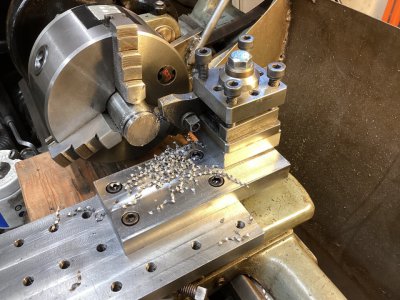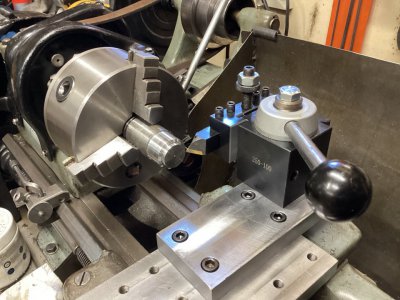- Joined
- Dec 20, 2012
- Messages
- 9,408
You could always countersink the hole for the head, right? Drill from the bottom then drill from the other side and countersink it so a shorter screw will work.I'd rather not do flanges, but the plinth height is 4". That's a long hole. Was thinking of using a long M8 SHCS.
However you measure the height, get it dead on. I would just go buy a digital height gauge and be done with it. You will need it again someday.No height gauge. Did buy one, but returned it, since it did not match the photos. Pics showed a carbide scriber, I got a steel one. Sort of a bait and switch. Got a refund, but haven't found a replacement. Some day...
Could measure the height from the bottom up, with some 123 blocks, ground stock and shims on the cross-slide. Not sure how accurate that would be with tolerance stack up, but it should allow a measurement.
I use paper and pencil - rub, rub, draw - whamo, updated!I'll redraw the tool holder, assuming a 2.5" x 2" x 4" piece of 6061. (Have a chunk on my desk.) My drawing is parameterized so if I need to change a dimension, I just type it into the spreadsheet and whamo, the drawing is updated.
This tool is really simple. All good tools are really simple. The tool does not take much stress so it doesn't have to be huge; it just has to be solid. The ledge and a single locking bolt is sufficient to resist all cutting forces. The two slots work; they prevent cracking and allow the top ledge to lock down solidly, accurately and only requires snugging lightly with a hex wrench to lock the blade in place. The top ledge only moves a few thousandths of an inch so cracking is very unlikely. If it hasn't cracked in over 25 years then I would say it has proven itself.
Try not to overthink it. I've already taken out anything in the design that doesn't absolutely have to be there.


